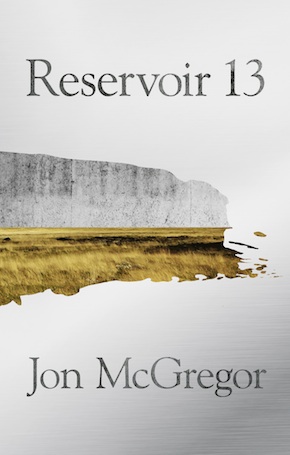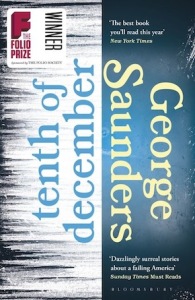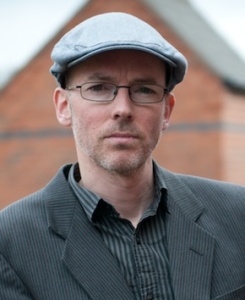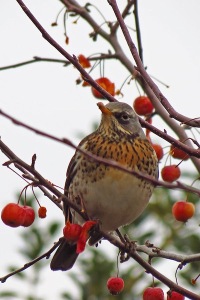Jon McGregor: The long and short of it
by Mark Reynolds
“An astonishing feat… precise and poetic.” Spectator
Although it begins with the disappearance of a young girl while holidaying with her family in a Peak District village, Jon McGregor’s Reservoir 13 deliberately fails to resolve whatever accident or crime may have occurred, and instead explores how such an event lives on in the collective memory of a small, close-knit community. As months and years roll by, cycles of nature are minutely observed alongside human acts, desires and diversions, with the focus endlessly and effortlessly shifting between bird migrations, fox cub births, insects in the compost, farmyard chores, family squabbles, deep-rooted habits and hierarchies on the allotments, and the pranks and petty misdemeanours of Mischief Night.
MR: The allotments are a nice anchor for the fixed routines and petty squabbles of English village life. How’s yours?
J McG: I haven’t got an allotment, but I’ve had them in the past – before children, mostly. I had one for two or three seasons, and tried again when I had kids and it didn’t work. It’s a time-consuming business. I think there was probably a time when I was planning to write just an allotment novel. There’s that classic thing where you have younger, enthusiastic people arriving, taking on their plot, and the old guys are looking up and nodding, knowing they’ll be gone in a year or two because it’s hard work. It takes someone who’s retired or obsessive to manage it.
The novel is set in an unidentified village in the Peak District. Are the geography and landscape an amalgam of places you’ve visited? How widely did you travel to research the book?
I didn’t do very much travel in order to research it. The Peak District is an area I know quite well, because I live in Nottingham so it’s fairly close by. I do quite a lot of cycling and walking around there. There are probably three or four specific villages from which I picked the most interesting bits. The quarry and cement factory are based on a real place.
Where people have to shut their windows at certain times of the day to keep out the dust?
Yeah, I once heard people talking about that on a bus around Cromford way. It’s one of the really interesting things about the Peaks, it’s not like the Lake District, which is just the lakes and the hills and the farms – and the tourists. The Peak District is all that plus pretty heavy industry, where there’s very active quarrying and there used to be lead mining, so there’s a weird mixture of stuff happening.
Once I knew I wasn’t going to resolve it, and the girl was just going to stay missing, I made sure I never worked out a theory for myself, because I knew that if I did that, then I’d be consciously hiding it from the reader.”
Were you ever tempted to resolve Becky’s disappearance?
No, and I thought about that a lot less than it’s become clear that people reading the book will think about it. Right from the beginning, the image I started with was the search party on the moor, not the girl disappearing or any of the possibilities of what might have happened. The most conscious decision that I made was that originally I’d written a short story based on the idea of the search party, and in that the missing child had been a five-year-old, and when I came to write the novel I decided to make her a thirteen-year-old because that gives her more agency, it opens up all the possibilities of what might’ve happened. If a five-year-old disappears, she’s probably dead, but if a thirteen-year-old disappears something terrible could’ve happened or she could’ve just run off. She could’ve run off and it’s gone badly, or she could’ve run off and it’s gone OK, and it just kind of opens it right up. It’s a tragedy for the parents, but the uncertainty is the important thing. I didn’t want it to be yet another book in which the body of a young woman gets objectified and pored over. Once I knew I wasn’t going to resolve it, and the girl was just going to stay missing, I did consciously make sure I never worked out a theory for myself, because I knew that if I did that, then I’d be consciously hiding it from the reader. So I still have never worked out what it is that’s happened.
Obviously the reader’s expectation when it first occurs is that it will be resolved, but it doesn’t remain an imperative as you read on.
I hope not. I know some people will feel cheated, that if something like that happens at the beginning you set up a contract with the reader to solve it for them. But I don’t buy that at all, I think that turns fiction into a kind of crossword puzzle. There are plenty of books that do that kind of thing, but this isn’t one of those.
The month-by-month observations give equal weight to the community and the surrounding nature. How did you settle on that structure? And then, having broken it down into these quite short bursts, how did you find yourself spreading the course of events over thirteen years?
I knew I wanted it to be about the community and the landscape across a period of time, and that’s a fairly indefinite canvas, so I then had to give myself boundaries and structures and processes. At one point I was thinking about setting it across just a day or two after she disappears, and then it was over a year. Then I thought no, I want it to be a long time, I want the tragicness to have receded a little, so I’ll make it a decade. And then I got stuck on the idea of the number thirteen, and I thought well OK, the girl’s thirteen years old, then let’s see thirteen years after she disappears, and once I had that I thought well let’s have thirteen main characters, let’s have thirteen types of bird. It was very arbitrary, but it was a kind of scaffolding device to allow me to populate this canvas.
It hadn’t occurred to me that there were thirteen main characters.
There are actually a lot more than that now. Initially I thought let’s have thirteen main characters and thirteen minor characters, but actually if you’ve got one character you have to know who their siblings are and who their partners are, and it does kind of multiply. I think there are about 80 characters now – or 80 people’s names.
There are species of birds, insects, plants and animal behaviours that were new to me. Is this from ingrained knowledge, or the result of research?
It’s almost entirely from research, and I kind of forced myself into that. I decided to have thirteen types of bird, but I couldn’t think of that many, so I had to start reading up on those and on the insects. I wanted a tiny insect, just to have this image of life happening at all the different scales, so I basically had to look for the smallest insect I could find and that was the springtails, which I’d never heard of before.
Among the birds the goldcrests and fieldfares were new to me, and they seem to be abundant in this region.
I’d assumed goldcrests were rare, but they’re not (I’d also assumed they were yellow), and with the fieldfares I really liked the idea of their migration, how they disappear as the swallows arrive for the summer. I wanted that cycle, each routine repeating year on year.
And because they’re annual, each of the individual behaviours you record could feature in any of the years.
Exactly. I knew I wanted lots of annual cycles, I wanted lots of routines, I wanted the daily work practices of, say, the sheep farmer or the dairy farmer, and the annual work practices of those jobs, and the daily and the annual life cycles of the animals, but then also the characters’ storylines spread across the thirteen years. So I wrote all those elements separately and kept them all in a big green bundle, and then once I’d finished that, I cut the thing up and arranged it across the thirteen years.
It’s those little differences that are specific to local areas that I’m interested in, things that are traditional but surviving in an unselfconscious way.”
Is Mischief Night something you have personal experience of?
Not personally, but I first came across that in Derbyshire. The dates vary, but it’s usually either a few nights before or a few nights after Hallowe’en and it’s only in those villages. It’s those little differences that are specific to local areas that I’m interested in, things that are traditional but surviving in an unselfconscious way.
Human impacts on the natural world include the drowned villages that created the reservoirs and dams, quarries carving up the landscape, motorway traffic visible from the hilltops, threats to agriculture and a nod to Swampy-era environmental protests. Did you have to subdue your own inner Swampy to maintain a neutral tone?
I think that was especially true with the stuff around the shooting estates, because there are very live issues around estate management and a lot of controversy around whether or not game estates are responsible for the decline of birds of prey; there’s a lot of evidence that they are persecuted. There’s a lot of debate about heather-burning, and whether maintaining these areas for shooting is a sensible thing to do. But as I was doing the research, I became much more interested in the fact that the gamekeepers, the estate managers have very strongly held, well-founded arguments, they see themselves as stewards of the countryside. It’s a complicated picture. I have a hunch which side I’m on if it came to a debate, but I didn’t want to portray a debate, I wanted to portray different people just doing their job, and the shooting estate just functioning as an estate. I didn’t really want to get any more complicated than that. But it’s a kind of odd historical thing that these huge areas of countryside are financed by people spending an absolute fortune to go up there and shoot some tame birds, it’s just a peculiar set-up. But there’s huge amounts of money involved, and the estate’s argument is, what’s the alternative? If you’re going to stop that money coming in, how are you going to manage those areas otherwise?
How did the accompanying story collection The Reservoir Tapes come about?
That’s something I’ve been working on since finishing the novel. Radio 4 have commissioned three writers to each do a series of stories, and they want them to be standalone stories which work together as well; single stories within the same context. When they told me about it I’d just finished the novel, and my head was full of these characters and their stories and that landscape, so it just seemed a natural thing to go on and write. Again it opens with the girl going missing, but then goes back to the weeks and months before she disappears. And again, it doesn’t get any closer to solving the mystery, it’s just a further exploration of those characters. Each story focuses on one character or one relationship, and some of them are characters from the novel, some of them are new characters. Writing for radio has a different rhythm, you need to be a bit more concise and quick. When you’re reading a book your eye can glance up a few lines to recap, but for someone listening to a radio story, you’ve got to hold their attention. It’s a different storytelling mode, which has been really fun to work with.
So is there a single narrator, or will there be a cast?
It’s a single narrator. They’re definitely stories rather than drama, so each one will be a single voice – but I think there will be some different voices between the stories.
Curiously, in reading the novel I was reminded, atmospherically at least, of Under Milk Wood – which of course was written for radio – because of the detached observation of daily routines; it’s quite objective.
Yeah, objective and roving. I’ll take that.
You jokingly labelled yourself ‘Britain’s second-best short-story writer’ after twice narrowly missing out on the BBC’s National Short Story Award. What attracts you to the short story as a form?
It was where I started, to be honest, writing very short pieces, I guess now it would be called flash fiction, though that name wasn’t around then. The very first work I had published was a set of a hundred hundred-word stories, and the first work I submitted to an agent was a collection of quite long short stories. And all my novels up to now have been built up from quite short sequences and sections. So I’ve always written short stories, I’ve always been interested in the form being dictated by the concept, rather than the other way round.
 Which short-story writers or collections do you particularly admire?
Which short-story writers or collections do you particularly admire?
George Saunders, for sure, particularly The Tenth of December, which felt like the culmination of everything he’d been working towards. Alice Munro, Kevin Barry, Lydia Davis. Generally the thing I’ve responded to with each of those people has been being surprised by what a short story can do. So the first time I read Alice Munro, having read a lot of classic Raymond Carver, minimalist, snapshot-type stories, it was like reading one compressed novel after another. That really pulled me up short, and I thought OK, well I’ve now expanded my view of what the story might be. And then you get the other end of the extreme, someone like Lydia Davis. A lot of her work she just calls it a story for convenience – she’s quite open about that – it’s essays, reflections, observations, it’s very playful, and again it caught me short, the different things you can do with stories.
Do you find that many of your students come with knowledge of these writers, or are you introducing them?
There’s a big variation in what students bring with them to the course in terms of their own reading and expectations, but it’s exciting to present them with work and writers they haven’t come across before, and quite a lot of the teaching I do revolves around looking at a particular writer or a particular story, and getting them to do imitation exercises, and seeing their own voice emerge through that imitation – showing them, you know, you think you’ve just copied this writer, but actually I can see your voice in there. A lot of young writers are very anxious about voice and about copying, but I’d rather give them a short cut to the lesson it took me ten, fifteen years to learn, that being influenced is a good thing.
A lot of the teaching I’ve been doing is outside the curriculum, with the literary journal The Letters’ Page, which the students work on.
How did that come about? Do submissions strictly have to be physically mailed?
Yeah, pretty strict about that. When I took the job I said I wanted to set up a literary journal as a teaching framework, and then I had a year to conceptualise it. It’s no good just saying, “We’re going to publish the best stories and poems,” because no one’s going to give you their best stories and poems. I knew I wanted it to be something that would have a bit of a USP, and I came up with the notion of hanging it around letters, and the comparison between a hand-written letter and an email, and that whole discussion about communication and correspondence would have a parallel in the difference between a printed book and reading on the screen. I’ve really enjoyed it. I hadn’t really thought this through, but because asking somebody to send you a letter is a relatively unusual thing to do, it has two benefits. It’s much easier to approach well-known writers and ask them for work. They wouldn’t be able to hand over a story, a poem or an essay because I can’t pay them as well as they can get paid elsewhere, but they’re happy to write a letter. So we’ve had people like George Saunders, Kevin Barry, Naomi Alderman, but also people submitting work who probably don’t think of themselves as writers at all. There have been so many letters we’ve published that don’t have an amazing literary quality, but they’re unaffected and tell a story and have a nice voice to them, and I think it’s just something about the accessibility of the form that encourages people.
There was a printed anthology of the best bits last autumn. Any plans to do more?
Yes. The first seven issues were online pdfs, then the one last autumn was a compilation of the best, but that’s now the first of an annual printed edition. The second is coming out in September. It won’t be as elaborate, with the box and the loose letters and everything, it will be a booklet. The shift away from doing it online to doing it in print, the pros and cons of that and the different meanings of the two forms has been a nice part of the discussion with students.
So did they play a part in designing the box set?
Not really. It’s published by a small press called Book Ex Machina, who do really nice small editions, so for the most part they did the design. But the students were involved in reading the submissions, helping to make selections, doing the research and the contributors’ notes and an online blog, social media, a lot of behind-the-scenes work.
What are you writing next?
I’m still finishing off the radio stories. It’s fairly urgent. The broadcasts will be from September through till Christmas, once a week, and then the book will come out 30 days after the last broadcast because of iPlayer. But by then I will be deep into a new project. I don’t know what it is yet, but at the moment I think it will be another novel – and hopefully it won’t take seven years.
So how much more work have you got to do on the stories?
It’s tidying up – quite a lot of tidying up. It’s been a new discipline for me, in that this is not a negotiable deadline. The broadcasts are scheduled, the studio’s probably been booked, there’s no flexibility about it at all. So it’s up to me to make sure they’re as good as they can possibly be before they get taken out of my hands – which is a bit nerve-wracking, but quite exciting as well. This is part of the BBC’s big push to revitalise the way they do short stories on the radio, and build on the success of the Short Story Award, which I’m involved in judging this year. Historically a lot of the short stories on the radio had already been written and were just called in, and this time they were keen to commission new work. Because they’re series, not serials, the challenge in writing them is to make sure they work individually, but that they work a little better collectively, to kind of reward people who are listening to all of them.
 Jon McGregor is the author of the novels If Nobody Speaks of Remarkable Things, So Many Ways to Begin and Even the Dogs, and the story collection This Isn’t The Sort of Thing That Happens to Someone Like You. He is the winner of the IMPAC Dublin Literature Prize, Betty Trask Prize, and Somerset Maugham Award, and has twice been longlisted for the Man Booker Prize. He is Professor of Creative Writing at the University of Nottingham. Reservoir 13 is out now from Fourth Estate in hardback, eBook and audio download.
Jon McGregor is the author of the novels If Nobody Speaks of Remarkable Things, So Many Ways to Begin and Even the Dogs, and the story collection This Isn’t The Sort of Thing That Happens to Someone Like You. He is the winner of the IMPAC Dublin Literature Prize, Betty Trask Prize, and Somerset Maugham Award, and has twice been longlisted for the Man Booker Prize. He is Professor of Creative Writing at the University of Nottingham. Reservoir 13 is out now from Fourth Estate in hardback, eBook and audio download.
Read more
@jon_mcgregor
Author portrait © Jo Wheeler
Mark Reynolds is a freelance editor and writer, and a founding editor of Bookanista.
@bookanista


